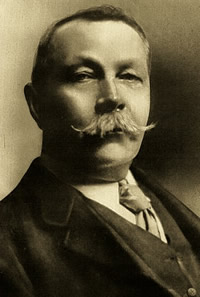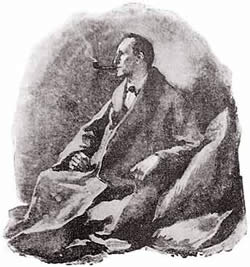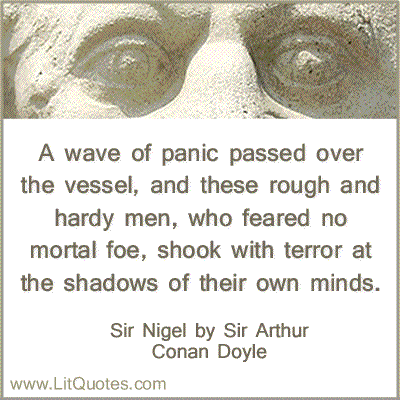 April Fools Day seems like an appropriate time to talk about one of the early successes of Sir Arthur Conan Doyle’s career, J. Habakuk Jephson’s Statement.
April Fools Day seems like an appropriate time to talk about one of the early successes of Sir Arthur Conan Doyle’s career, J. Habakuk Jephson’s Statement.
The short story is a work of fiction. However it’s based on a true story, the maritime mystery of the Mary Celeste. In 1872 the Mary Celeste was spotted by the crew of the British brigantine Dei Gratia. The Mary Celeste seemed to be in trouble. Some of her sails were missing while others flapped uselessly in the wind. Most alarming of all was the fact that there was no one at the wheel!
The Mary Celeste was boarded and found to be relatively undamaged. The cargo was intact. There was plenty of food and water aboard. However there was no sign of the crew. Not a soul was on board. To this day no one knows what happened to the crew of the Mary Celeste.
J. Habakuk Jephson’s Statement was published anonymously. In it, Conan Doyle wrote about an abandoned vessel named the Marie Celeste. The story tells how the ship was commandeered and sailed to Africa. Later the passengers and crew were murdered.
The problem was that the story was so vivid that some people mistook it for an article. They thought they were reading a piece of investigative journalism. It caused quite an uproar.
Other people reading the tale understood that it was a work of fiction. However it drew a lot of attention when hundreds of readers thought that they recognized the writing style of the anonymous author. They suspected that the author was none other than Robert Louis Stevenson.
You can get more details about J. Habakuk Jephson’s Statement at our partner site,
The Chronicles of Sir Arthur Conan Doyle.


 April Fools Day seems like an appropriate time to talk about one of the early successes of Sir Arthur Conan Doyle’s career, J. Habakuk Jephson’s Statement.
April Fools Day seems like an appropriate time to talk about one of the early successes of Sir Arthur Conan Doyle’s career, J. Habakuk Jephson’s Statement.



 Could James M. Barrie, the author of Peter Pan, be the literary Kevin Bacon of his day? It might sound a little nutty, but take a look at his connections:
Could James M. Barrie, the author of Peter Pan, be the literary Kevin Bacon of his day? It might sound a little nutty, but take a look at his connections:
